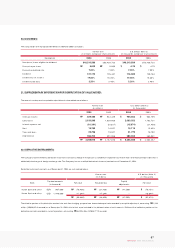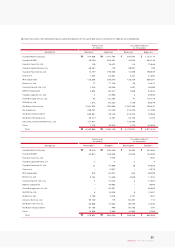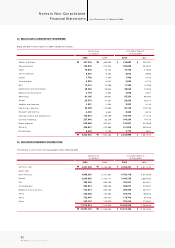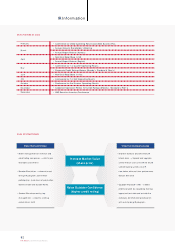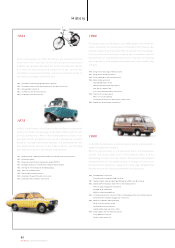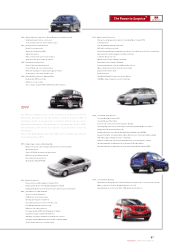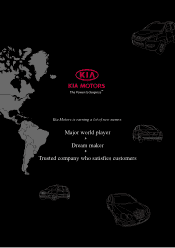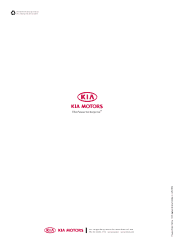Kia 2004 Annual Report Download - page 96
Download and view the complete annual report
Please find page 96 of the 2004 Kia annual report below. You can navigate through the pages in the report by either clicking on the pages listed below, or by using the keyword search tool below to find specific information within the annual report.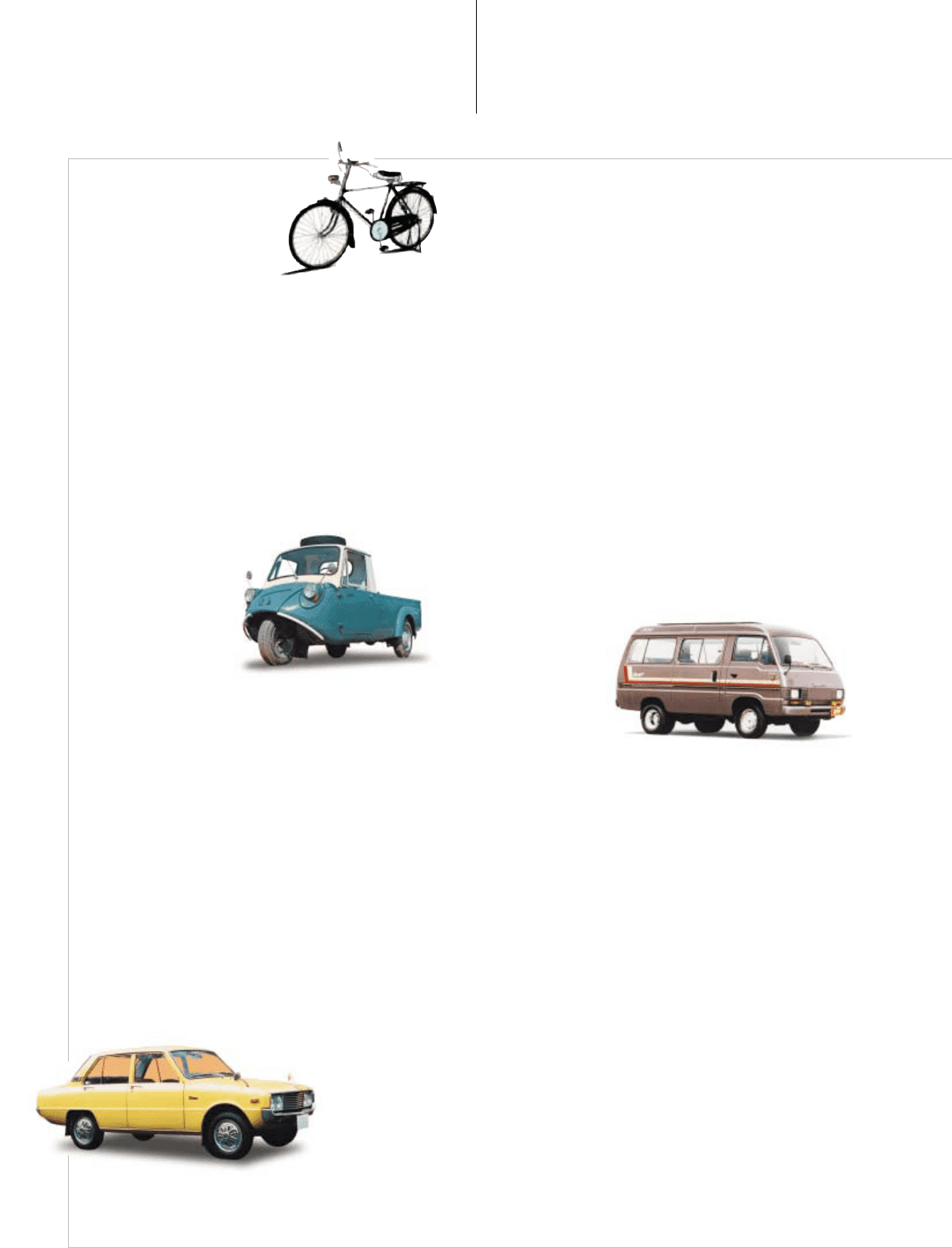
1980
The boom years for Kia Motors, the 1980s began with landmark
events including the assassination of President Park Chung Hee
and the second world oil shock. But Kia turned crisis into oppor-
tunity as external events were used to spur innovation and the
achievem ent of unprecedented growth through far-reaching
cost reductions, technological development, and a bold sales
strategy.
1980 _ Bongo Truck sm all cargo vehicle produced
1981 _ Bongo Coach minibus produced
1983 _ Ceres multipurpose farm truck produced
1986 _ Besta minibus produced
1986 _ Kia basketball team formed
1986 _ Pride (Festiva) passenger car produced
1986 _ First export of Pride model
1986 _ Concord mid-size passenger car produced
1988 _ Trade 2.5-ton truck produced
1986 _ Rhino 5-ton truck marketed
1986 _ Total vehicle production to date reaches 1 million units
1989 _ Capital mid-size passenger car launched
1990
In the 90s, Kia laid down a concrete plan of action centered on a
global management strategy.
With the construction of the Hwasung Plant, the production
system was expanded to an international scale, and by
developing its own first new model, Kia gained technological
competitiveness in the global market. A change of name from
Kia Industries to Kia Motors, along with a new logo, helped bring
Kia into the ranks of full-line autom obile manufacturers.
1990 _ Asan Bay Plant constructed
1990 _ Com pany name changed to Kia Motors Corp.
1991 _ Sephia compact sedan and Sportage SUV appear in 29th Tokyo Motor Show
1992 _ Sephia and Potentia luxury sedan enter commercial production
1990 _ New company headquarters constructed
1990 _ Kia Japan Corp. established
1990 _ Kia Motors America established
1993 _ Total vehicle production reaches 3 million units Sportage enters com mercial production
1990 _ Com prehensive vehicle proving ground constructed
1994 _ Kia Motors celebrates 50th anniversary
1990 _ Group corporate Identity revised
1990 _ Avella (Aspire) enters production
1990 _ Sephia and Sportage exported to U.S.A.
1995 _ Credos (Clarus) mid-size sedan introduced
1990 _ Tokyo R&D center opened
1990 _ Pregio minibus produced
1944
Since its foundation in 1944, Kia Motors has devoted itself for
more than half a century to the sole purpose of personal
mobility. Kia's product development history extends from Korea's
first domestically produced bicycle through two-wheel
motorbikes, three-wheel vehicles, and four-wheel-drive trucks, to
the family car, telling a story all its own.
1944 _ Company founded as Kyungsung Precision Industry
1952 _ Company produces first Korean-made bicycle, the Sam cheolli model
1957 _ Siheung Plant completed
1961 _ C-100 motorcycle enters production
1962 _ K-360 3-w heel truck introduced
1973
1973 is a watershed in the history of Kia and Korea's automobile
history as it m arks the opening of the Sohari Plant and the start
of mass production. With it Kia introduced the nation's first
conveyor-system production line, set up a production structure
based on a single continuous process, and produced the first
four-wheel trucks and cars to be made in Korea, thus breaking
new ground as an all-round vehicle manufacturer.
1971 _ Kia Service Corp. established Titan and Boxer four-wheel trucks enter production
1973 _ Sohari factory built
1973 _ Kia produces first Korean-made gasoline engine (2,000cc)
1974 _ Kia begins production of first Korean-made passenger car, Brisa
1975 _ First export of finished automobile (Brisa pickup)
1976 _ Take-over of Asia Motors Co.
1978 _ Diesel engine enters production
1979 _ Assembly of Peugot 604 sedan commenced
1979 _ Assembly of Fiat 132 sedan comm enced
History
96
KIA Motors_2004 Annual Report



